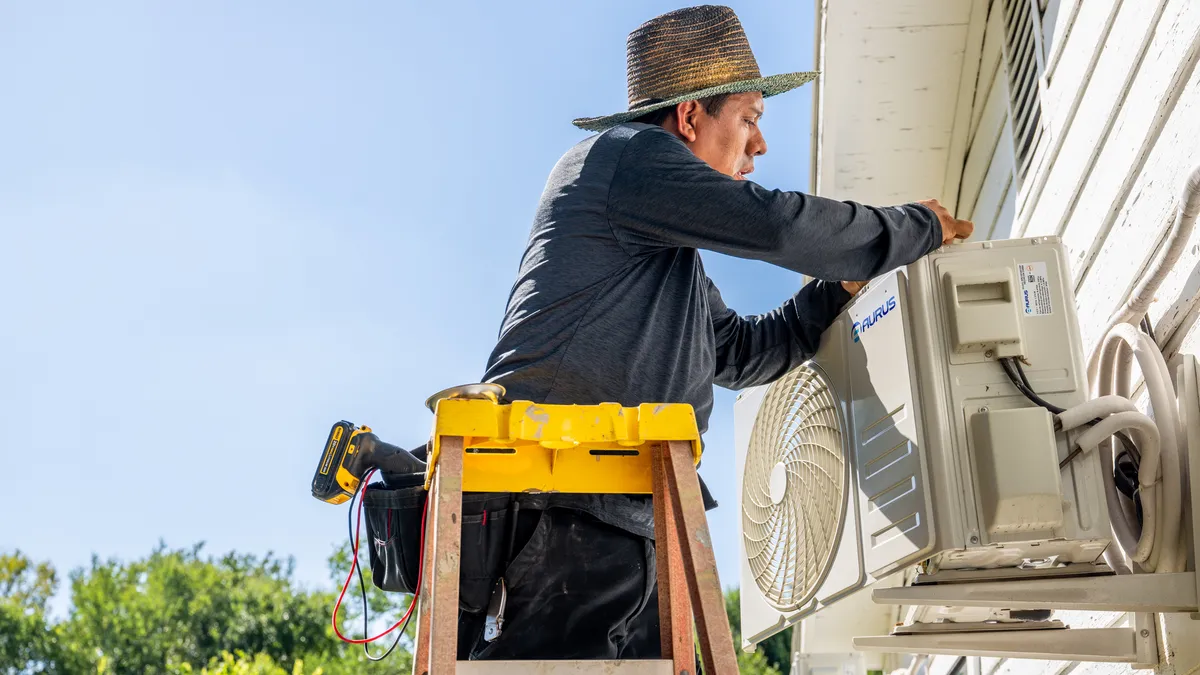How can communities stay cool in a warming world without generating more greenhouse gas emissions?
That’s the question more than 60 countries, including the U.S., committed themselves to answering on Dec. 5 at the United Nations climate summit known as COP28, where they signed a first-ever Global Cooling Pledge. Pledging nations promise to reduce cooling-related emissions 68% by 2050 in comparison to 2022 levels.
"We want to lay out a pathway to reduce cooling-related emissions across all sectors but increase access to sustainable cooling," U.S. climate envoy John Kerry said at COP28, according to Reuters. Cities across the U.S. have grappled with the increasing need for cooling in recent years, with numerous setting up programs to provide potentially life-saving AC units to lower-income residents. However, relying on air conditioning to battle the risks of hotter summers has caused concern about increasing climate pollution and straining the electric grid.
In tandem with the announcement of the Global Cooling Pledge, the UN Environment Programme released a report examining how exactly the world can reach near-zero emissions in key cooling sectors, including refrigeration and air conditioning. Here are three top takeaways for city leaders:
Think passive.
The report highlights the power of passive cooling measures, including insulation, natural shading and ventilation, to stymie the need for active cooling measures such as air conditioning. Passive cooling can reduce a building’s energy consumption by 8% to 70%, suggests research cited in the report.
The report highlights passive cooling techniques such as improved insulation, reflective surfaces, materials that absorb heat, shading through nature and building design, natural ventilation, urban design, landscaping and orientation, and specifications for windows and doors.
Building codes are a powerful lever to drive down cooling emissions.
One of the most effective regulatory actions to reduce cooling demand is building energy codes that explicitly include the passive cooling measures mentioned above, the report says. “These codes can also be extremely important in driving uptake of efficient cooling equipment with low global warming potential,” it adds. In California, such a push is underway, with the state’s energy commission recently releasing draft building code updates that encourage heat pumps over less efficient, one-way AC units.
The UN report authors note that municipal governments need sufficient capacity to develop and implement such policies, and that cooling policies must consider humidity and airspeed, not just temperature.
Countries need national action plans for cooling, which local plans can inform.
“Countries must urgently examine how, institutionally, they can enhance coordination and sectoral planning for cooling, and explore how regional cooperation and policy harmonization can help unlock economies of scale,” the report says. Local and regional climate or heat action plans “offer a key opportunity for [countries] to identify the size of their cooling challenge,” it explains.
The report also highlights the Heat Action Platform, an online resource for decision makers on reducing extreme heat impacts at the local and regional levels. The tool allows users to filter through a database of dozens of heat resilience solutions from around the world.












